International SEO is the process of making your website more accessible and visible to users in multiple countries or languages, thanks to search engine optimization.
If you’re running a business that’s targeting international customers, then it should be a key part of your digital marketing strategy.
This guide discusses some of the best practices and tactics for international SEO.
- International SEO: The Ultimate Guide
- What Is International SEO?
- Why Is International SEO Important?
- International SEO vs. Local SEO
- Is International SEO for You?
- How to Implement International SEO
- International SEO: Best Practices to Avoid
- Conclusion
What Is International SEO?
International SEO is the process of optimising your website so that it can be more easily found and understood by users in multiple countries or languages.
This can be accomplished through various means, such as translated content, international keyword research, and localised link building. You can expand your audience and improve brand recognition by targeting users in particular countries.
Google is the most popular search engine in the world, with countries such as India, for example, having over 93% of the market share. Or Brazil, with a share of desktop traffic of over 89%.
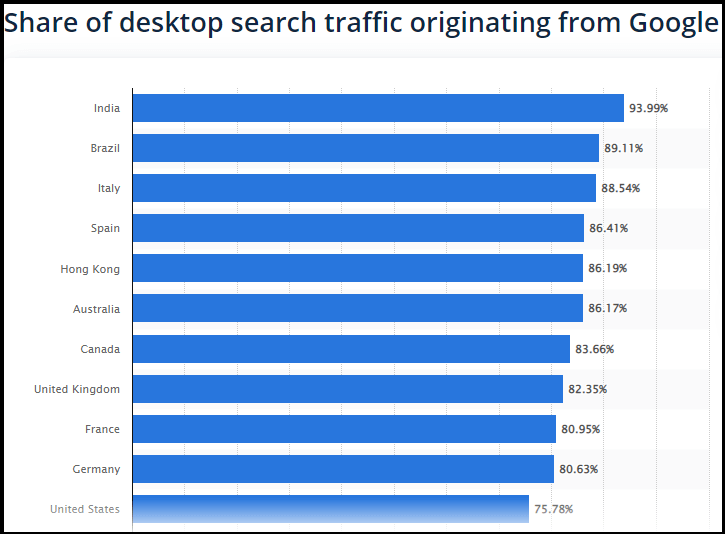
This means that if you want to reach international audiences, you need to optimise your site for Google’s international search engine algorithms.
Why Is International SEO Important?
There are over 8 billion people around the world and 5 billion use the internet. With international SEO, your business can tap into new markets and reach a larger audience.
Some of the benefits of international SEO include:
- Increased traffic, conversion and sales from new markets
- Higher search engine rankings
- Improved brand recognition
- Improved customer satisfaction
1. Increased traffic, conversion and sales from new markets
The first and most obvious benefit of international SEO is increased traffic from new markets.
If you optimize your site for users in particular countries or regions, you’ll be more likely to show up in their search results. This can lead to a significant increase in web traffic and, as a result, more customers and sales.
2. Higher search engine rankings
Optimising your site for the relevant keywords through keyword research, localized content, and international link building will help you rank higher in international search results . This will help you reach a larger audience.
3. Improved brand recognition
International SEO can also help improve brand recognition. Higher search rankings can help improve your brand awareness and visibility.
4. Improved customer satisfaction
If you optimise your site for international users, they’ll be able to find the information they’re looking for more easily. This can lead to higher satisfaction rates and repeat customers.
International SEO vs. Local SEO
It’s important to understand the difference between international SEO and local SEO.
Local SEO is the process of optimizing your site for users in a specific location. This can be a city, state, or country. The goal of local SEO is to rank higher in local search results.
International SEO is different in that it’s the process of optimizing your site for users in multiple countries. The goal of international SEO is to rank higher in international search results.
Both local and international SEO can be accomplished through keyword research, content optimization, and link building. The main difference is that international SEO requires an additional focus on language and cultural factors. This means more competition and higher costs, higher content writing needs, but also more potential rewards.
Greatest Obstacles in International SEO
As with anything, international SEO comes with its own set of challenges. Some of the greatest obstacles you’ll face include:
- Different languages
- Different cultures
- Different search engines
- Different regulations
1. Different Languages
One of the biggest challenges you’ll face with international SEO is different languages. Depending on the country or region you’re targeting, you may need to create content in a different language.
This can be a challenge if you don’t speak the language yourself. In this case, you’ll need to hire a translator or international SEO agency that specializes in multilingual SEO.
2. Different cultures
What works in one country may not work in another. This is why it’s important to research the culture of your target market before creating content or launching a marketing campaign.
Different cultures have different customs, values, and beliefs. What works in one culture may not work in another, causing localisation blunders.
3. Different search engines
Not all countries use the same search engines. In fact, some countries have their own search engines. This can make it difficult to target all of your potential customers.
For example in Russia, the most popular search engine is Yandex, whereas in China it is Baidu.
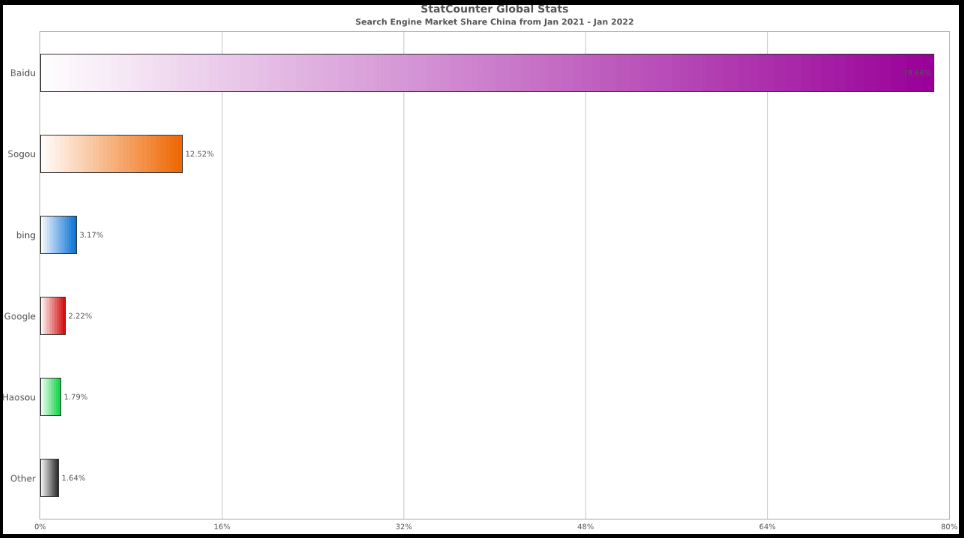
To reach the widest audience possible, you’ll need to optimize your site for the most popular search engines in each country.
4. Different regulations
Some countries have laws that regulate what type of content can be published online. This can make it difficult to create content that meets all of the legal requirements.
You’ll need to research the laws and regulations of each country before creating or publishing content.
Is International SEO for You?
By 2021, retail e-commerce sales worldwide had already surpassed 5 trillion U.S. dollars, and this number is only going to continue growing in the years to come.
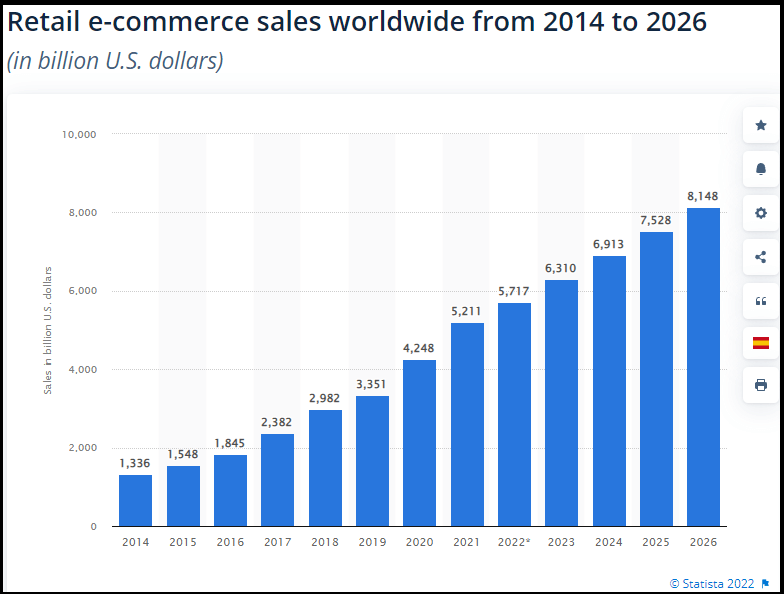
Now you may be wondering if international SEO is right for your business. The answer to this question depends on your business goals.
If you want to expand your reach and target customers in multiple countries, then international SEO is a good option.
However, if you’re happy with your current customer base and don’t want to expend the extra effort and resources required for international SEO, then you may want to stick with local SEO.
To help you decide, here are some points you should follow:
- Check Your Audience Geolocalization
- Verify the Languages They Speak
- Search their Keywords
- See What Your Competitors Are Doing
Check Your Audience Geolocalization
If you have access to Google Analytics, you can check the geolocation of your website’s visitors.
To do this, go to the “Audience” section and click on “Geo”.
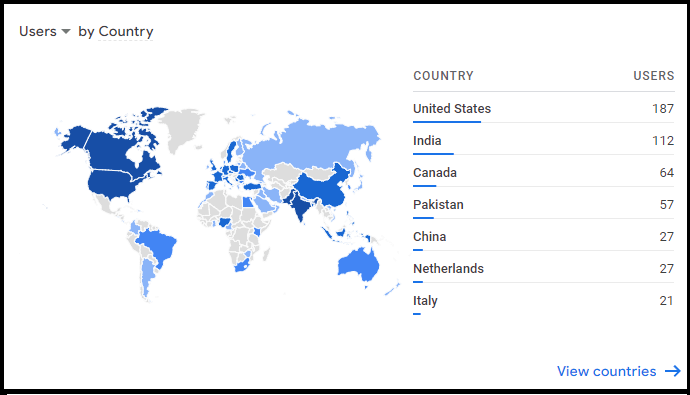
This will show you a map of where your visitors are located.
If you see that a significant portion of your traffic is coming from other countries, then international SEO may be a good option for you.
Verify the Languages They Speak
If you have international visitors, you should also check which languages they speak. To do this, go to the “Audience” section and click on “Language”. This will show you a list of the languages spoken by your visitors.
If you see that a significant portion of your visitors speaks a language other than English, then you may be thinking to go international.
Search their Keywords
To search for keywords in different languages, go to Google and change the language settings. Then search for a keyword related to your business.
If you see that there are a lot of results in the language you searched, then international SEO may be a good option for you.
See What Your Competitors Are Doing
Finally, you should also research your competitors to see if they’re targeting international audiences. If they are, then you can opt for international SEO too!
How to Implement International SEO
Now that you know international SEO may be a good option for your business, let’s take a look at how to implement it.
There are seven main steps you should follow:
- Choose Your Markets
- Know the Technical Requirements
- Do Keyword Research
- Translate and Optimize Content
- Check Internal Linking
- Give Google the Right Instructions
- Build Links According to Your Targets
1. Choose Your Markets
The first step is to choose your target markets. To do this, you’ll need to research your audience and competitors.
Consider the following factors:
- The needs of your target market
- The size of the market
- The level of competition
- The resources required
- Your business goals
The Needs of Your Target Market
A good international SEO strategy starts with understanding the needs of your target market, such as:
- What type of content are they looking for?
- What type of language do they use?
- Are they searching for particular products or services?
The Size of the Market
Another important factor to consider is the size of the market. You’ll need to research the following.
- How many people speak the language in the country you’re targeting?
- What is the purchasing power of those people?
- What is the internet penetration rate in that country?
The Level of Competition
You also need to research your competition.
- Are there already a lot of businesses targeting your target market?
- If so, what type of SEO strategies are they using?
- Are you offering different products, services, or content that they don’t have?
The Resources Required
You need to consider the resources required to implement your strategy.
- Do you have the budget to target multiple countries?
- Do you have the manpower to manage a complex international SEO campaign?
- Do you already have all the ccTLD for your brand name?
Your Business Goals
Your business goals should also play a role in deciding whether or not to implement an international SEO strategy.
- Are you looking to increase brand awareness in new markets?
- Are you looking to generate more leads or sales from international markets?
To research all this data, you can use surveys and quizzes among your audience and customer base. You can also tools that show demographic data such as Google Analytics.
After considering all of these factors, you should be able to narrow down your list of potential target markets. Then you can start researching each market in more depth.
2. Know the Technical Requirements
Before you start implementing international SEO, there are a few technical requirements you need to be aware of.
These include:
- Dedicated URLs for Each Market
- A Content Delivery Network
- Translated Content
- Proper URL Structure (ccTLD, Subfolder, Subdomain, or Parameterized URLs)
Dedicated URLs for Each Market
One of the most important technical requirements for international SEO is having dedicated URLs for each market. This means that you need a different URL for each country or region you’re targeting.
For example, if you have a website for the United States, you would need a separate website for Canada with a Canadian URL. The same goes for other countries.
Each market should have its own URL. This makes it easier for Google to index and rank your pages. Plus, it also allows you to customize the content for each market.
In fact, Google recommends having dedicated URLs.
A Content Delivery Network
Another technical requirement is having a CDN (Content Delivery Network). A CDN is a network of servers that delivers content to users based on their location.
This is important for international SEO because it makes sure that your website loads quickly, no matter where in the world someone is trying to access it from. It also helps improve your website’s security.
Since core web vitals is a ranking factor, you want your site to upload quickly in order to avoid giving visitors a bad user experience.
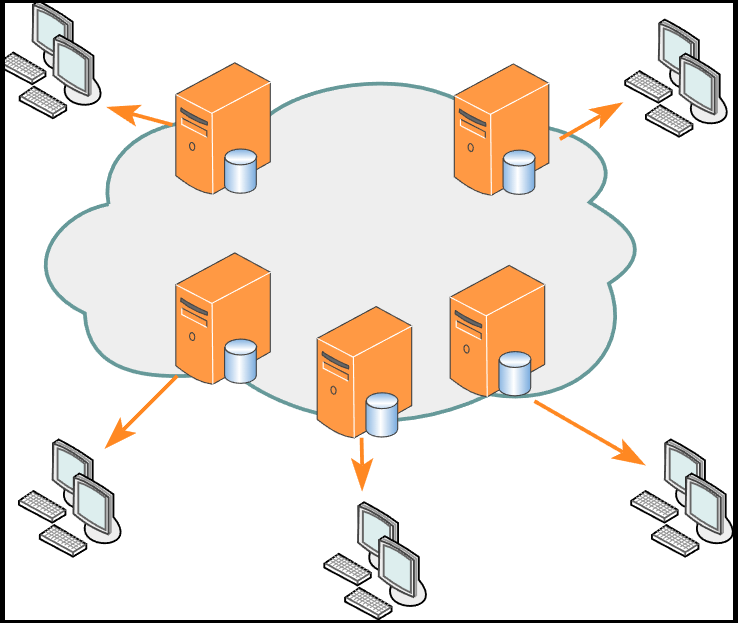
Translated Content
When you’re targeting international markets, you need to make sure that your content is translated and localised. This means more than just using Google Translate.
Make sure that the language is natural and that the content is relevant to the market you’re targeting. Pay attention to the terminology used in the content, as some words may have different meanings in different markets. It’s a good idea to use professional translation services from native speakers for accurate translation and localisation.
You would also want to consider using the local currency for your products and services.
Proper URL Structure
The final essential technical requirement is having the proper URL structure.
There are three main types of URL structures you can use for international SEO:
- ccTLD (Country Code Top Level Domain)
- Subfolder
- Subdomain
- Parameterized URLs
ccTLD
A ccTLD is a country code top-level domain. This is the most common type of URL structure and it’s what most people think of when they think of international SEO.
For example, if you wanted to target the United States, your URL would look like this:
www.example.com/
While if you want to target the U.K. your URL can be:
www.example.co.uk/
Or, if you want to land on Mexican users, your URL would be:
www.example.com.mx/
The main advantage of using a ccTLD is that it’s the most straightforward way to show Google which country you’re targeting.
However, ccTLDs can be expensive, and you may not be able to get the country-specific domain name you want.
Plus, if you want to target multiple countries, you would need to register and manage multiple domains, which can be time-consuming and expensive.
Finally, using different domain names will dilute the authority and link juice of your website, which can hurt your international SEO efforts. This is the opposite of using just a unique domain name, where you convert all your backlinks, mentions, and signals to one main, stronger domain.
Subfolder
A subfolder is a folder within your main domain that is used to target a specific country or language.
This version is quite popular among companies going international and across webmasters or SEOs around the world.
For example, if you wanted to target the U.S., your URL would look like this:
www.example.com/us/
Or, if you wanted to target the U.K., your URL would be:
www.example.com/uk/
Or if you wanted to target Spanish-speaking-countries, your URL could be:
www.example.com/es/
The main advantage of using a subfolder is that it’s less expensive than using a ccTLD.
Plus, it’s easier to manage multiple subfolders than it is to manage multiple domains.
However, subfolders are not as clear to users as ccTLDs, which may not be as familiar with how URLs are structured.
Subdomain
A subdomain is a domain that is on a different level than your main domain. For example, if your main domain is www.example.com, your subdomain could be us.example.com or uk.example.com.
The main advantage of using a subdomain is that it’s less expensive than using a ccTLD.
Plus, it can be easier to manage multiple subdomains than it is to manage multiple domains.
However, subdomains are not as clear to Google as ccTLDs, so there is a risk that your international SEO efforts will not be as effective.
Parameterized URLs
Parameterized URLs are URLs that use parameters to target specific countries or languages.
For example, if you wanted to target the U.S., your URL would look like this:
www.example.com/?country=us
Or, if you wanted to target the U.K., your URL would be:
www.example.com/?country=uk
Or if you wanted to target Spanish-speaking countries, your URL could be:
www.example.com/?country=es
However, parameterized URLs are best to be avoided. They aren’t user-friendly and can often confuse bots as well.
In fact, Google is not recommending them for proper international SEO.
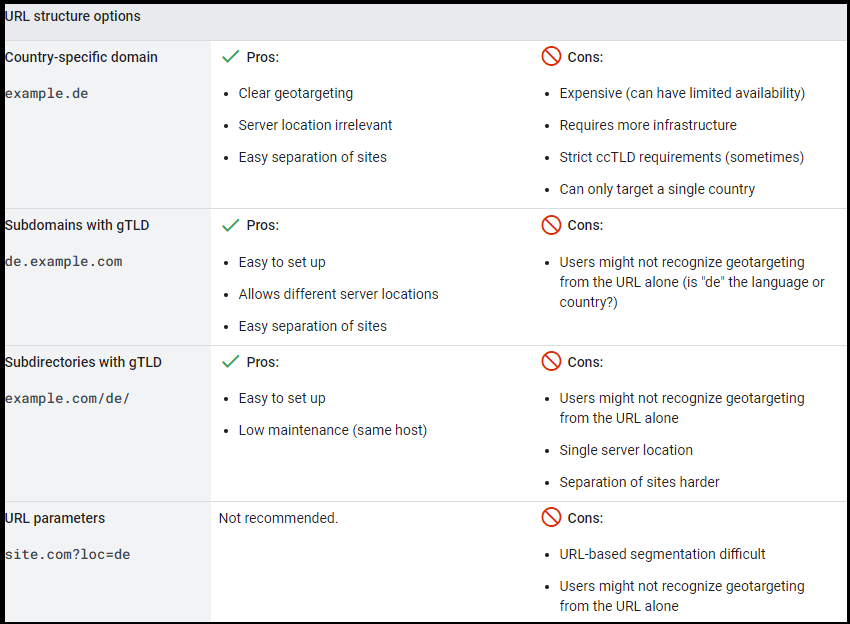
So, which is the best option for international SEO? There is no one-size-fits-all answer, as the best option for you will depend on your specific circumstances.
However, as a general rule of thumb, it is recommended to use either a ccTLD or a subfolder.
3. Do Keyword Research
Once you’ve decided which URL structure to use for your international SEO efforts, it’s time to start thinking about which keywords you want to target in each country.
To do this, you will need to do keyword research for every country that you want to target.
The best way to do international keyword research is to use a tool like Google Keyword Planner. With this tool, you can research the monthly search volume for specific keywords in different countries. You can also use Google Trends to see how popular certain keywords are in different countries over time.
But consider that, if you need to perform keyword research in a foreign language, it’s advisable to get professional keyword research and analysis services.
This is probably the most cost-effective solution, as you end up saving time figuring out the right keywords (and what they mean), and you’re more likely to get accurate results.
4. Translate and Optimize Content
Once you’ve done your keyword research, it’s time to start translating and optimizing your content for each international market.
If you want to target a country where you don’t speak the language, it’s advisable to hire a professional translator who is a native speaker of the language. This is important because a professional translator will be able to accurately translate your content, and they will also be familiar with the culture of the country, which is important when trying to appeal to a foreign audience.
When translating your content, it’s important to keep in mind that Google does not consider synonyms to be equivalent. So, if you are targeting the keyword “international SEO”, you cannot simply translate it to “global SEO” and expect to rank for the same keyword. Instead, you need to use the exact same keyword in your translated content.
Additionally, you will need to optimize your title tags, meta descriptions, and h1 tags for each international market. When doing this, be sure to use your target keywords in each of these elements.
5. Check Internal Linking
When internationalizing your website, it’s important to make sure that your internal linking is correctly set up.
If you are using a ccTLD or subfolder structure, your links should automatically be redirected to the correct country or language version of your website.
However, if you are using a parameterized URL structure, you will need to set up redirects from your international pages to your canonical pages.
Additionally, make sure that your links are pointing to the correct international version of your website. For example, if you have a link on your U.S. website that points to your U.K. website, you will need to change that link to point to the U.S. version of the page.
If you don’t do this, Google may think that you are trying to game the system and your international SEO efforts will suffer as a result.
To enhance user experience, you should also create a navigation menu to switch between languages or countries on your website.
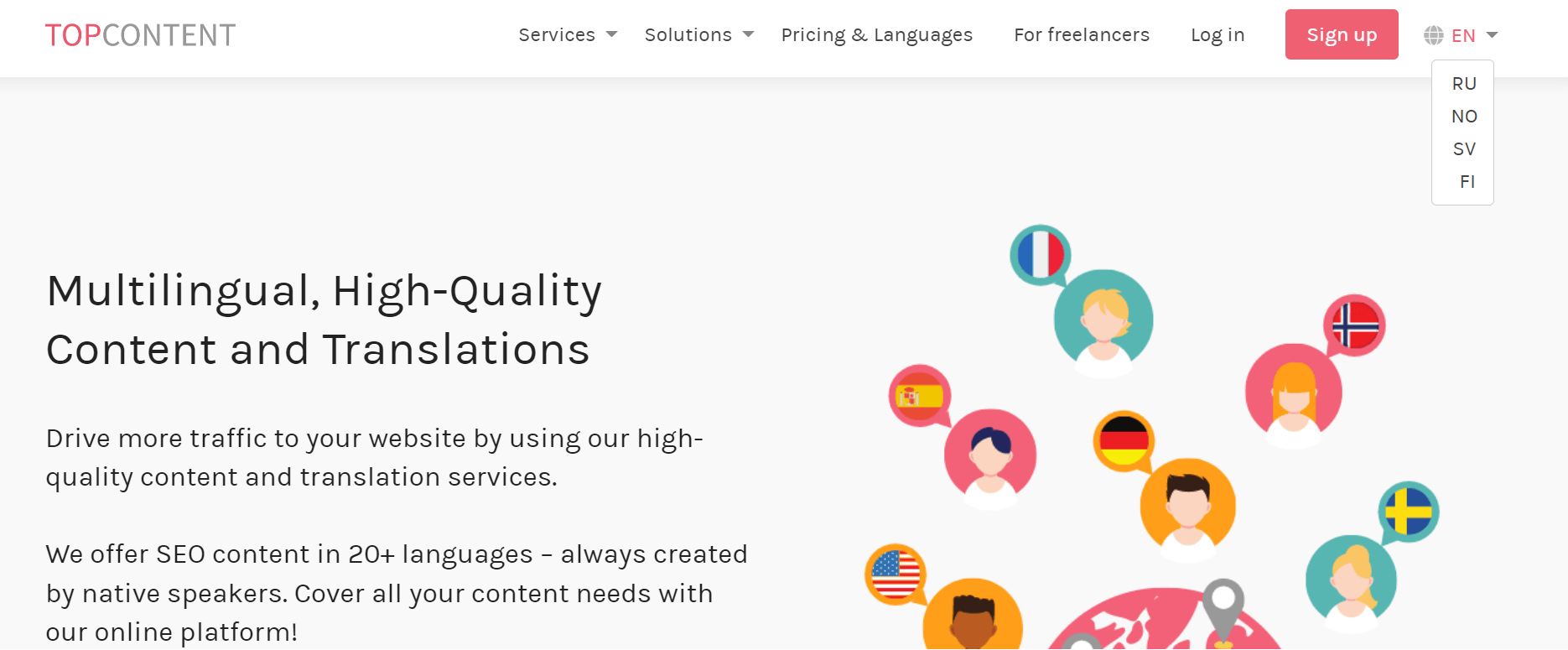
This will make it easy for users to find the content they are looking for, regardless of which country or language they are looking in.
6. Give Google the Right Instructions
In order for Google to rank your international pages correctly, you will need to give it the right instructions. You can do this by using hreflang tags. Hreflang tags are HTML tags that tell Google which language or country a page is targeted at.
For example, if you have a page on your website that is targeted at users in the United States, you would use the following hreflang tag:
<link rel=”alternate” hreflang=”en-us” href=”http://example.com/”>
Or, if you have a web page that wants to focus on users in the United Kingdom, you should use the following hreflang tag:
<link rel=”alternate” hreflang=”en-gb” href=”http://example.com/”>
You can also use hreflang tags to target specific languages, even if those languages are spoken in multiple countries.
For example, if you have a page on your website that is targeted at users who speak French, you would use the following hreflang tag:
<link rel=”alternate” hreflang=”fr” href=”http://example.com/”>
It’s important to note that you should use hreflang tags on all of the pages on your website, not just your international pages. This is because Google uses hreflang tags to determine which version of your website to show users in each country or language.
If you only use hreflang tags on your international pages, Google may not be able to correctly identify your website’s international versions and your international SEO efforts will suffer as a result.
Also, be sure to avoid geo-redirection. Geo-redirection is the practice of automatically redirecting users to a different version of your website based on their location.
For example, if a user from the United Kingdom tries to access your U.S. website, they would be automatically redirected to your U.K. website.
Geo-redirection can cause a number of problems, including:
- Users may be taken to the wrong version of your website. For example, a user from the United Kingdom who is trying to access your U.S. website may be taken to your U.K. website instead.
- It can make it difficult for Google to index your international pages.
- It can cause international users to see content that is not relevant to them.
To avoid these problems, you should use hreflang tags instead of geo-redirection.
7. Build Links According to Your Targets
Link building is an important part of international SEO. However, it’s important to note that not all links are created equal.
For example, a link from a high-quality website that is relevant to your industry will carry more weight than a link from a low-quality website that is not relevant to your industry.
Also, if you are trying to rank your website in the United Kingdom, you will want to focus on building links from high-quality websites that are relevant to your industry and are located in the United Kingdom.
This is why it’s important to build links according to your targets.
International SEO: Best Practices to Avoid
International SEO can be a complex and time-consuming process. By following the best practices in this guide, you can ensure that your international SEO efforts are successful.
However, there are some common mistakes. So, be sure to:
- Avoid Auto-Redirect
- Don’t Use Cloaking
- Follow GDPR Regulations
- Avoid Automatic Translation Tools
Avoid Auto-Redirect
One of the most common mistakes in international SEO is the use of auto-redirects. Auto-redirects can be used to automatically send visitors to the correct version of your website based on their language or location. However, auto-redirects can also cause problems.
If not properly configured, they can send visitors to the wrong version of your website or even prevent them from accessing your website altogether.
To avoid these problems, be sure to use the hreflang tags, instead.
Don’t Use Cloaking
Cloaking is the practice of showing different content to search engines and visitors.
This can be done for a variety of reasons, but it is generally used to improve search engine rankings or to trick visitors into clicking on ads. However, cloaking is considered a black hat SEO technique and can result in your website being banned from search engines.
To avoid this, be sure to:
- Only show the same content to both visitors and search engines
- Use only white-hat SEO techniques
Follow GDPR Regulations
The General Data Protection Regulation (GDPR) is a set of regulations that apply to companies that collect or process the personal data of EU citizens.
The GDPR requires companies to get explicit consent from users before collecting or processing their data. It also gives users the right to access, correct, and delete their personal data.
To avoid problems with the GDPR, be sure to:
- Get explicit consent from users before collecting or processing their data
- Provide an easy way for users to access, correct, and delete their personal data
- Follow all other GDPR requirements
Avoid Automatic Translation Tools
They can be a quick and easy way to translate your website into multiple languages. However, they are not always accurate and can often produce strange results.
To avoid these problems, be sure to:
- Use a professional translation service
- Edit and proofread your website’s content after it has been translated
- Monitor your website’s traffic to ensure that visitors are understanding your content
Conclusion
International SEO is a complex process, but it’s important to get it right if you want your website to be successful in multiple countries.
By following the tips and tricks outlined in this guide, you can ensure that your international SEO efforts are successful.
